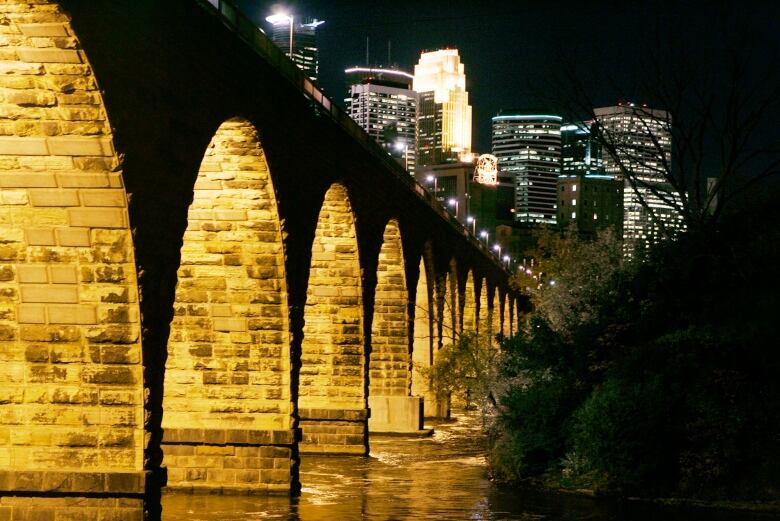How 5 cities gave new life to old rail bridges
Could the Prince of Wales Bridge become Ottawa's High Line?

News that the City of Ottawa is considering spending $250,000 to install permanent gates to prevent pedestrian access to the Prince of Wales Bridge has been met with a fair degree of public criticism.
Trespassers who nevertheless enjoy strolling across the rusting structure, which saw its last train 15 years ago and was acquired by the city in 2006, seethe idea asan unimaginativewaste of money and, more to the point, potential.
To get an idea of what could be, here's a look at what five other cities did with disused bridges, viaducts and elevated railways.
New York: The High Line
Coun. Jeff Leiper, no fan of Ottawa's plan to block the Prince of Wales Bridge, happened to be in New York this week, where he visited that city'scelebrated High Line.
This is even better than I'd expected. Gorgeous. pic.twitter.com/SVQhBinzsS
—@JLeiperThe High Line is a 2.3-kilometre linear park built atop a disused, elevatedfreight rail line along Manhattan's West Side. Since its first section opened to the public in 2009, the public park has become one of New York's top tourist draws, offering high-design seating areas andunique views of thecity's historic Meat Packing District.
Paris: La Promenade Plante
Sometimes called "the original High Line," the French capital's Promenade Plante is another linear park created atop the 19th-centuryVincennes railway viaduct. Designed by landscape architectsJacques Vergely and Philippe Mathieux and inaugurated in 1993,the park is also longer than its American protg,stretching4.7 kilometres from theOpra Bastille to a spiral staircase leading down to Boulevard Priphrique.Being Paris, the viaduct arches house quaint cafs, studios and boutiques.

Minneapolis: Stone Arch Bridge
TheStone Arch Bridgeis a historic rail bridgecrossing theMississippi RiveratSaint Anthony Fallsin downtownMinneapolis, Minn. The last passenger train crossed the bridge in 1978, and in 1992 it was acquired by Minnesota'stransportation department. Two years later, the cityconverted the bridge into a crossing forpedestrians and cyclists.

Poughkeepsie: Walkway Over the Hudson
As its name suggests, the Walkway Over the Hudson in Poughkeepsie, N.Y., is a pedestrian walkway spanning the Hudson River. The steel cantilever bridge served as a dual-track rail crossing from 1889 to 1974, and was added to the U.S. National Register of Historic Places shortly after. In 2009 itwas given new life as the longest footbridge in the world, part of the new Walkway Over the Hudson State Historic Park.

Fredericton: Old Train Bridge
Also known as the Fredericton Railway Bridge and the Bill Thorpe Walking Bridge, after the founder of Fredericton, N.B.'s trail system, the 78-year-old steel truss bridge was converted to a pedestrian crossing over the SaintJohn River in 1997. The federal and provincial governments kicked in funding for themillenniumproject, which now forms part of the Trans Canada Trail. Localssay they have theworld's longest walking bridge, but they aren't the only ones to make that claim.













_(720p).jpg)


 OFFICIAL HD MUSIC VIDEO.jpg)
.jpg)



























































































